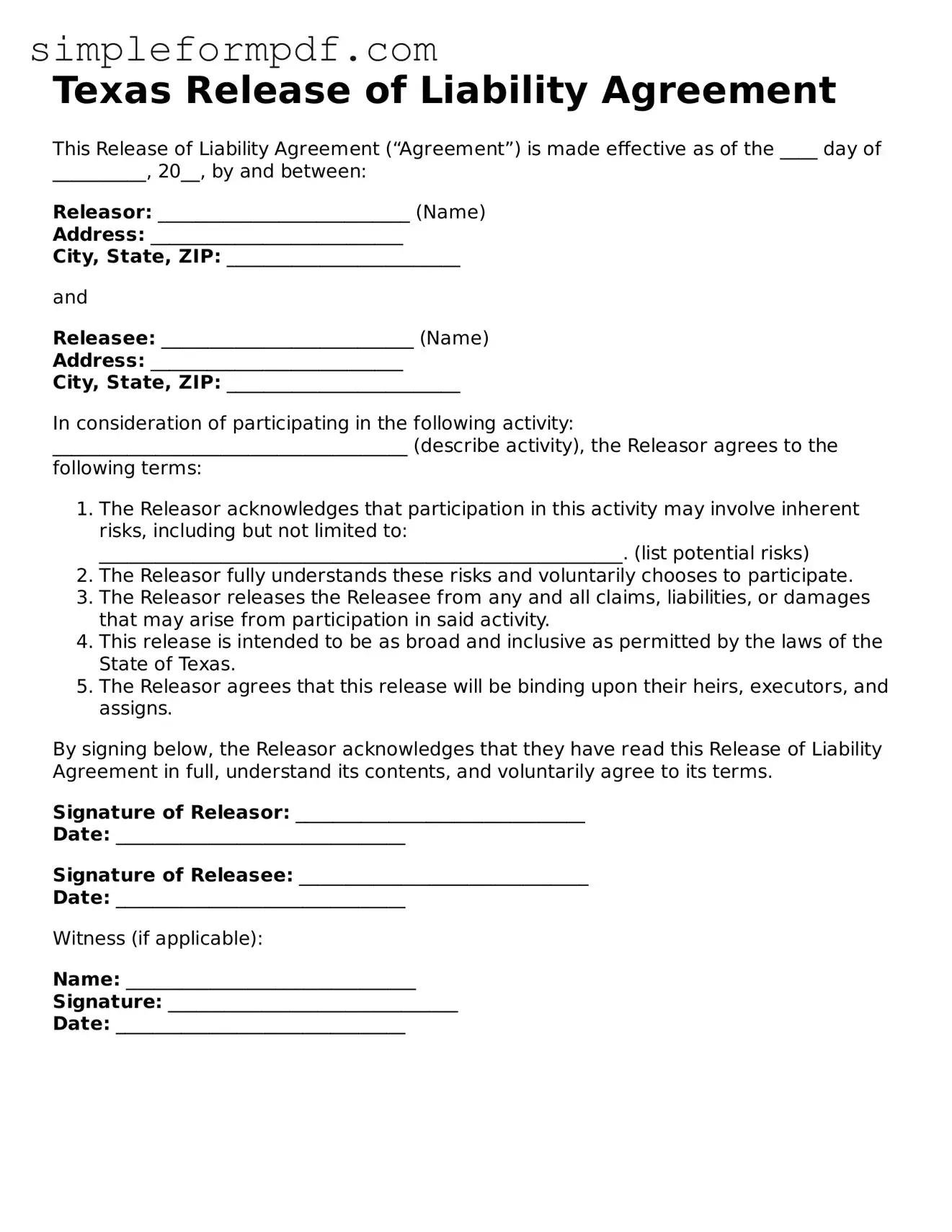Texas Release of Liability Agreement
This Release of Liability Agreement (“Agreement”) is made effective as of the ____ day of __________, 20__, by and between:
Releasor: ___________________________ (Name)
Address: ___________________________
City, State, ZIP: _________________________
and
Releasee: ___________________________ (Name)
Address: ___________________________
City, State, ZIP: _________________________
In consideration of participating in the following activity: ______________________________________ (describe activity), the Releasor agrees to the following terms:
- The Releasor acknowledges that participation in this activity may involve inherent risks, including but not limited to: ________________________________________________________. (list potential risks)
- The Releasor fully understands these risks and voluntarily chooses to participate.
- The Releasor releases the Releasee from any and all claims, liabilities, or damages that may arise from participation in said activity.
- This release is intended to be as broad and inclusive as permitted by the laws of the State of Texas.
- The Releasor agrees that this release will be binding upon their heirs, executors, and assigns.
By signing below, the Releasor acknowledges that they have read this Release of Liability Agreement in full, understand its contents, and voluntarily agree to its terms.
Signature of Releasor: _______________________________
Date: _______________________________
Signature of Releasee: _______________________________
Date: _______________________________
Witness (if applicable):
Name: _______________________________
Signature: _______________________________
Date: _______________________________
